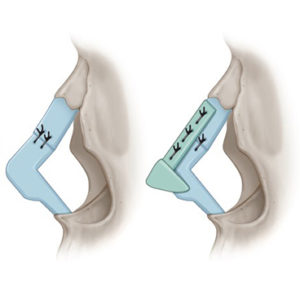Abstract The importance of consistent and high-quality photographic documentation of rhinoplasty patients cannot be understated. Herein we will review important concepts in medical photography and discuss how one can alter the quantity and quality of light that is captured by the camera. Equipment selection will be discussed, including camera, lens, and external lighting sources. We… [Read More]
Rhinoplasty
How to Manage Deviated Nose: Personal Tips
Abstract Deviated nose is one of the most difficult problems to correct even for experts of rhinoplasty. To correct the deviated nose, preoperative diagnosis and examination are as important as surgical techniques. After precise preoperative examination and planning, proper surgical techniques should be applied according to anatomical location and type of deviation to correct the… [Read More]
Let Down Technique
Abstract Rhinoplasty is one of the most common surgeries performed in the world, usually with cosmetics concerns. It is important to treat the nose as a functional unit, avoiding to separate aesthetics from function. The main goal in preservation Rhinoplasty techniques is to eliminate the dorsal hump while conserving the key stone area intact. This… [Read More]
Lateral Crural Flap Technique
Eric W. Cerrati, MDAssistant Professor, Facial Plastic & Reconstructive Surgery, Division of Otolaryngology–Head & Neck Surgery, University of Utah, Salt Lake City, UT Regan Thomas, MDProfessor, Facial Plastic & Reconstructive Surgery, Department of Otolaryngology–Head & Neck Surgery, Northwestern University, Chicago, IL Corresponding Author: Eric W. Cerrati, MD30 No. 1900 E. Room 3C120 SOMSalt Lake City,… [Read More]
The Belt and Suspenders approach to Open Rhinoplasty: safe techniques for surgical educators to utilize in training resident surgeons and fellows.
Joseph J Rousso, MDjrousso@nyee.eduChief, Dvision of Facial Plastic & Reconstructive SurgeryAssociate ProfessorThe New York Eye & Ear Infirmary of Mount SinaiNew York, New York ABSTRACT Rhinoplasty is arguably the most complex technical procedure in the field of plastic surgery. On account of its unique anatomy and required technical capabilities, the open rhinoplasty surgery is a… [Read More]
Rhinoplasty in Small Bulbous Asian Noses: Some Special Surgical Techniques to Consider
Introduction Asia is a big continent, nose morphology changes from different regions. Often times when Asian rhinoplasty is the topic, it is the Eastern Asian nose that is talked about. East Asia is geographically divided into Far East Asia and South East Asia; and the South East Asian noses are one of the smallest noses… [Read More]
The Harvest of Costal Cartilage in Rhinoplasty
Introduction Autologous costal cartilage is an excellent source of grafting material in the nose. It has several advantages when compared to other autologous grafts. First of all, it is versatile and can be carved into many different shapes and sizes depending on the patient’s deformity. It is also more abundant and usually stronger than other… [Read More]
Polly Beak Deformity
Introduction Post-operative persistent, unattractive nasal dorsal fullness in the lower half that distorts the profile and observes the nasal tip similar to the convex profile of the parrot’s beak is colloquially termed Polly Beak deformity. In general, rhinoplasty remains the most challenging of all esthetic facial procedures. Never are two procedures ever identical. Hence, it… [Read More]
Complications in Rhinoplasty
Abstract What holds true for every surgery is also essentially true of rhinoplasty. Knowledge about and awareness of complications and the possible means to handle them is essential for every rhinoplasty surgeon. Referring to the time of occurrence, complications can be divided into early and late complications. Early complications such as bleeding or infection are… [Read More]
Cleft Lip Rhinoplasty
Introduction The secondary cleft lip nasal deformity presents an extreme challenge to the facial plastic surgeon. The deformity is complex and involves all tissue layers, including skeletal platform, inner lining, osseocartilaginous structure, and overlying skin. It is often the characteristic cleft nasal deformity that is noticeable to the observer after a well performed cleft lip… [Read More]







